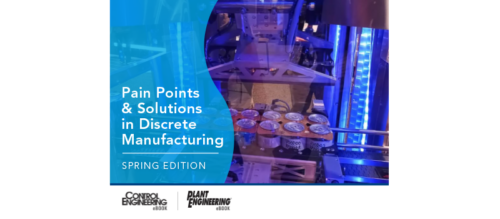Motion controllers can adapt themselves
Adaptive motion controllers can be modified to a controlled process behavior, among other controlled process benefits.
Every feedback controller is adaptive since it can change its control effort in response to a change in the error between the measured process variable and the desired setpoint. A true adaptive controller, however, also can adjust its individual control efforts, and its underlying control strategy. It can tune its own parameters or otherwise modify its own control algorithm to accommodate changes in the behavior of the controlled process.
An adaptive proportional controller, for example, might adjust its gain when it observes that the process started to respond to its control efforts too quickly or too slowly. This could help maintain tighter control over a process that experiences variable sensitivity like a robot with variable load weights.
For example, if a particularly heavy load were to slow the robot’s movements, an adaptive, proportional-only controller could compensate by increasing its gain. Conversely, it could decrease its gain if its control efforts became too aggressive after the load was lightened. Either way, the controller has to be able to measure its performance to determine which course to take, if any. It could weigh the load directly, time how long it takes to move the load from point A to point B, or measure how far the arm overshoots along the way.
Unfortunately, adaptive controllers are generally slow about detecting changes in the behavior of the controlled process since long-term changes easily can be masked by, or confused, with short-term disturbances. A long history of control efforts and process variable measurements is generally required to distinguish between short-term and long-term effects. And even when a bonafide change in the process’s behavior is finally detected, it’s not always obvious how the control algorithm should be altered to compensate.
Other objectives for adaptive motion controllers
Despite these challenges, adaptive motion controllers also can optimize the trajectory that the controlled process follows to reach its destination. This is especially useful in applications where overshoot is undesirable, as explained in the previous robot control example. Once the controller has learned how the robot responds to control efforts, it can compute the final command required to move the arm to the desired position, as well as the sequence of commands required to get it there without having to reverse course.
The mathematics required to accomplish this artificial learning can be extremely complicated, and no single algorithm has emerged as the superior choice. However, some variation of online modeling usually is employed where the controller calculates a mathematical equation that relates recent changes in the process variable to the control efforts that caused them. Once the process model is in hand, the controller then can adjust its control algorithm to produce the desired closed-loop behavior under the assumption that the recent behavior embodied in the mathematical model will adequately predict future process behavior as well.
For more details about adaptive controllers and how they work, see "Adaptive Controllers Work Smarter, not Harder," in a previous issue of Control Engineering.
Vance J. VanDoren, PhD, PE; edited by Emily Guenther, associate content manager, Control Engineering, CFE Media, eguenther@cfemedia.com.
MORE ADVICE
Key Concepts
- The abilities of adaptive motion controllers
- How adaptive motion controllers detect motion control behavior
- How controllers detect performance.
Consider this
What kind of applications would benefit most from using adaptive controllers?
ONLINE EXTRA
See a related story on adaptive controllers linked below.
Do you have experience and expertise with the topics mentioned in this content? You should consider contributing to our CFE Media editorial team and getting the recognition you and your company deserve. Click here to start this process.


